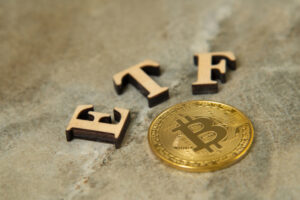Several formidable competitors have emerged in the quickly developing world of cryptocurrencies and blockchain technology with the goal of revolutionizing a range of industries, including supply chains, gambling, and banking. With its strong framework for decentralized applications (dApps) and smart contracts, EOS has stood out among these. This article seeks to demystify EOS, explaining its special qualities, advantages, and prospects as well as how it compares to other top competitors like Ethereum and Cardano.
EOS understanding
Block.one’s EOS is a blockchain platform created to address the usability and scalability problems that other networks, like Bitcoin and Ethereum, experience. Its delegated proof-of-stake (DPoS) consensus mechanism is the secret to its success. Through a small number of dependable block producers, this technique enables quick transaction confirmation and tremendous scalability, allowing EOS to handle thousands of transactions per second.
Key characteristics and benefits:
a. Scalability: EOS ensures horizontal scaling with its DPoS consensus method to manage rising transaction volumes without sacrificing performance. This makes EOS a great option for creating sophisticated dApps that need high transaction rates.
b. Flexibility: EOS gives developers a considerable lot of freedom in designing and implementing dApps and smart contracts. Because it supports multiple programming languages, including C++, its programming language, EOSIO, is usable by a variety of developers.
c. User-friendly Experience: By demystifying the complicated aspects of blockchain technology, EOS puts the user experience first. Developers can produce decentralized applications more quickly thanks to its user-friendly interface and tools, which encourages a wider usage of blockchain technology.
d. Transactions on EOS are free, in contrast to many other blockchain networks. By doing away with the requirement that users hold or utilize a native token for payment, this feature increases the platform’s usability.
EOS governance structure:
A cutting-edge governance mechanism that includes token holders in decision-making is introduced by EOS. Voting for block producers, who verify transactions and participate in the governance of the EOS network, is available to token holders. This paradigm makes sure that blockchain governance is democratic and inclusive, allowing stakeholders to have a say in how the platform will develop in the future.
Utilization and adoption:
Numerous programmers and companies eager to create decentralized apps have been drawn to EOS’s adaptable and scalable architecture. Its potential applications stretch across a wide spectrum of sectors, from social media and supply chain management to gaming and finance.
Finance: By enabling quicker, more economical transactions, enhancing financial inclusion, and lowering reliance on intermediaries, EOS has the potential to disrupt traditional finance.
b. Gaming: Blockchain integration has significantly increased in the gaming sector. EOS is a desirable option for creating blockchain-based gaming platforms because of its fast throughput and low latency, which promote transparency, ownership, and secure in-game asset management.
c. Supply Chain Management: By providing immutable records of transactions, improving traceability, and lowering fraud and counterfeiting activities, EOS can simplify supply chain management.
EOS has also been investigated as a possible platform for decentralized social media networks, giving users control over their data, privacy, and content monetization.
Getting to Know EOS Tokenomics:
Unlike the more conventional proof-of-work (PoW) and proof-of-stake (PoS) systems, EOS runs on a delegated proof-of-stake (DPoS) consensus mechanism. The economic model and guiding principles that determine a certain cryptocurrency’s supply, utility, and distribution are known as its tokenomics.
a. Token Distribution: Starting in June 2017, an extended initial coin offering (ICO) that lasted a year was used to issue EOS tokens. One of the biggest ICOs in history, this one raised over $4 billion. EOS coins were ERC-20 tokens on the Ethereum blockchain during the ICO. These ERC-20 tokens were changed for native EOS tokens after the EOS mainnet launched in June 2018.
b. EOS Utility: Within the ecosystem, there are numerous uses for EOS coins. They act as the EOS platform’s native coin and are necessary for programmers to communicate with the network, gain access to resources, and carry out transactions inside their dApps. EOS tokens can also be staked in order to promote network governance and get incentives.
c. Resource Allocation: EOS uses a resource allocation mechanism that enables users to access network resources in proportion to the quantity of tokens they hold or stake, unlike other blockchain platforms that impose transaction fees. The goal of this approach is to make it unnecessary for consumers to pay separate transaction fees, making it more convenient for both developers and end users.
Overview of EOS Staking
Token owners can obtain incentives by staking their tokens, which they do in exchange for locking up their tokens to maintain the network’s operations. Staking, often known as “voting” in the EOS environment, is an essential component of network governance.
a. Block Producers: The 21 organizations that make up the EOS consensus model, referred to as block producers (BPs), are chosen by token holders through a vote process. These BPs are in charge of manufacturing blocks, safeguarding the network, and validating transactions. With their EOS coins, users can cast votes for the block producers they choose. Active block producers are the top 21 candidates who received the most votes.
b. Voter Rewards: EOS token owners can receive voting rewards by staking their tokens and taking part in the voting process. The EOS protocol’s inflation mechanism is used to produce these incentives. A predetermined number of brand-new EOS tokens are produced each year and given to block producers, who then share some of the rewards with voters. Network governance controls the distribution method and the precise inflation rate.
c. Proxy Voting: This option is available to token holders who do not want to actively participate in voting or who lack the technological know-how to do so. Users that use proxy voting can provide a reliable proxy their right to vote on their behalf. In this approach, even token holders who aren’t actively staking can reap the perks of staking while also aiding in network governance.
EOS is a prominent blockchain platform for decentralized applications and smart contracts thanks in large part to its innovative tokenomics and staking methodology. Despite the system’s seeming complexity, it eventually offers users, developers, and other stakeholders in the EOS ecosystem a strong, democratic, and lucrative platform.
Challenges and the Proposed Future:
Even though EOS has come a long way, it still has issues that must be resolved if it is to reach its full potential. Critics have criticized scalability issues and the concentration of block manufacturers. But the EOS community is actively working together to address these problems and keep the platform getting better.
With impending updates like EOSIO 2.0, which promises better speed, increased security, and developer-friendly features, EOS hopes to advance even farther in the future. These advancements, along with rising developer acceptance and the expansion of the EOS ecosystem, present a positive outlook for the platform’s future.
Ethereum and Cardano vs EOS:
EOS vs. Ethereum: Both EOS and Ethereum are well-known for supporting the creation of smart contracts and dApps, but there are some significant differences between the two.
Scalability: Scalability has been a major issue for Ethereum, resulting in traffic jams and expensive transaction fees during peak hours. EOS, in contrast, uses parallel processing and a delegated proof-of-stake (DPoS) consensus mechanism because it was created with scalability in mind. Because of this, EOS can process more transactions per second and offers a more streamlined user interface.
Governance: The community-driven governance approach used by Ethereum incorporates stakeholder ideas and consensus. EOS, on the other hand, uses a more organized form of governance in which block producers are chosen through a voting process. With this architecture, decisions can be made more quickly, and token holders can take an active role in network governance.
Resource Allocation: The resource allocation approach used by EOS enables users to access network resources according to the number of tokens they have or the amount they have staked. In contrast, the fee-based approach used by Ethereum requires users to pay for each transaction. Transaction fees are not necessary with EOS’s resource allocation approach, which also makes it easier for users and developers to use.
Cardano vs. EOS: Cardano is a blockchain platform that seeks to offer a safe and scalable framework for the creation of decentralized applications (dApps). Let’s contrast a few crucial features of EOS with Cardano.
EOS uses a DPoS consensus process, in which token holders elect a predetermined number of block producers. In contrast, Cardano uses a proof-of-stake (PoS) consensus process that combines stakeholder voting and slot leaders to guarantee security. Although scalability and decentralization are the goals of both techniques, the specific methods used vary.
Interoperability and Layered design: Cardano separates the computational layer from the settlement layer in its blockchain design. Future improvements are possible with this approach, which also improves compatibility with other blockchains. Even though it is very scalable, EOS does not place the same emphasis on layered design and interoperability.
Research-Driven Development: Cardano sets itself apart from the competition by placing a strong emphasis on academic study and a peer-reviewed approach to its development process. The platform’s dependability and security are intended to be ensured by the emphasis on rigorous academic research. While still emphasizing innovation, EOS takes a different tack when it comes to development.
Conclusion:
EOS stands out as a beacon of scalability, versatility, and user-friendly experience in a field packed with cryptocurrencies and blockchain technologies. With its cutting-edge approach to dApps and smart contracts, EOS is positioned to be a key player in the development of blockchain technology. Investors, developers, and blockchain enthusiasts can better appreciate the potential of this innovative platform in enabling decentralized apps and blockchain innovation by knowing the special features and advantages of EOS.






